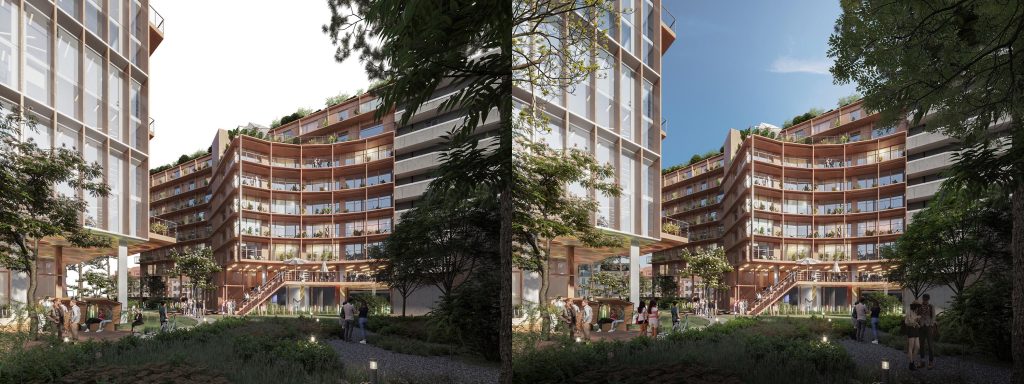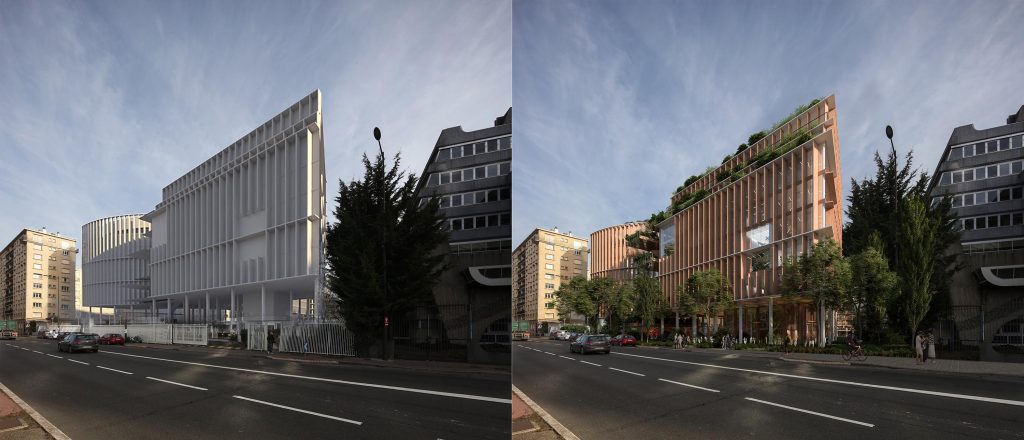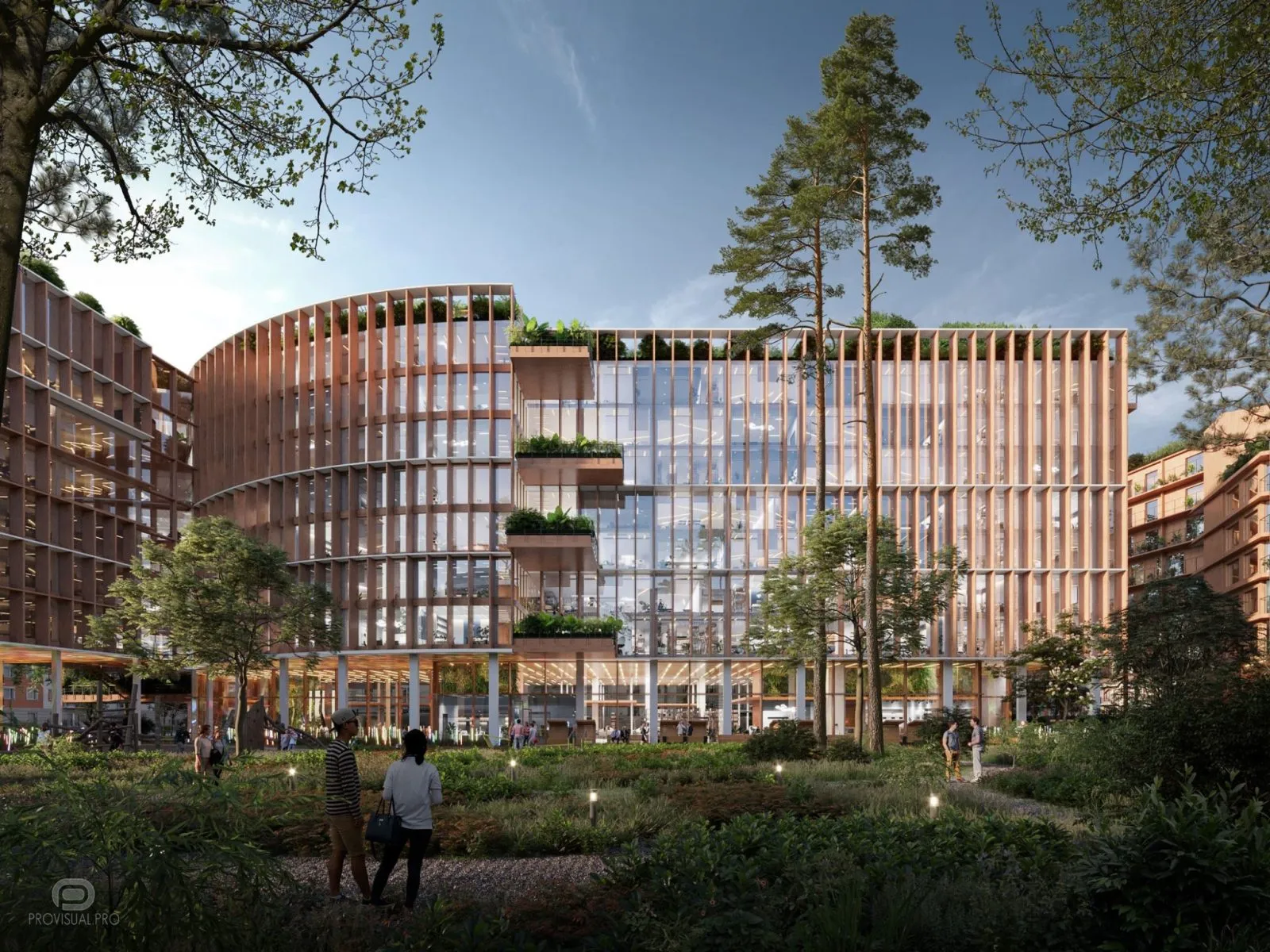Making of 3D rendering “The Boulogne project”
October 10, 2024
About me
Hello,
My name is Alexander Suharukov.
I am an architect and 3d artist with over 10 years of experience in 3d visualization. In 2017, I founded a 3d visualization studio – Provisual.pro
I would like to talk about how to make a high quality 3d rendering and photomontage of a building exterior and the process of creating the Boulogne project. I hope that my experience will be useful.
Project information
BOULOGNE PROJECT.
Client | A2M
Location | Paris, France
Year | 12.2021
The Boulogne project is a contest project for the renovation of Renault headquarters in Paris. The building will consist of office and retail spaces. The total area of the premises is almost 30,000 m².
This contest architectural project involved the efforts of a large team of professionals such as A2M, Atixis, Agence Babylone, Art acoustique, RLB-SQA, Crea-Tec, Sureal, Rotor, AxCe sécurité, and BTPP.
Renderings were created in collaboration with Belgian architecture bureau A2M and French landscape architecture bureau Agence Babylone.
The project was very urgent. It took us 8 days to create the renderings and photo montage since we got the working files from the architects to make the final renderings.
Soft and computer hardware
I used different soft on this project. Most of the work was done with 3ds Max 2019, Corona renderer, Itoo Forest Pack + RailClone, and post-processing in Adobe Photoshop CC. I also used additional plugins like Sigershaders, Corona material and FloorGenerator
Computer hardware: AMD Ryzen 9 3950X 3.5 GHz 16-Core, NVIDIA GeForce GTX 1070 Ti, RAM 64GB, 2x Dell u2412m.
3D Modeling
The original building model was provided by the architect. This model required significant revision, since it seemed good at first glance, but lacked such details as balcony railings, slab thicknesses, etc.

Composition, white renderings and viewing angle
Applying polygonal modeling and RailClone modeling on the model, we got some results to work with. I proposed several options to the architect regarding a camera views with basic light in the white renderings. The Architect chose the camera views, so I proceeded to work on the renderings.

The rendering references were found on the Internet and on Behance.

The landscape architect’s task also included the external appearance of the green area and small architectural forms.

Materials and light
As for the materials, there is nothing out of the ordinary. The Sigershaders corona material and Corona Material Library solve the main problems. Sometimes I use Quixel Megascans and Poliigon, but this project didn’t need such textures.
Standard Corona Sun + Corona Sky light and interior lighting in Corona Light and OSL Window shader. I will reveal more details about it further.
The main materials are glass and wood. These are their settings below.
Glass with Noise on Bump and Sigershaders Wood with CoronaRoundEdges on Bump and Color correction on Diffuse. CoronaRoundEdges proves to be a great tool when the model geometry isn’t good and you need to make a fake Chamfer.

Plants, models, and working scene
The Forest Pack is a great tool for working with plants. In this project I used several types of plants from the Maxtree collections, as well as the standard ones from the Forest Pack (grass and gravel). I used the Clusters planting method in the Forest Pack to get the plants grouped by species.

Models from Maxtree, Evermotion, and Corona Scatter were used to fill balconies and terraces. Chairs, umbrellas, and other stuff are from 3dsky (3ddd) and Evermotion. 3D models of people are taken from various collections.

Interiors, OSL Window shader
The interiors in the buildings are made with Low poly office interior model with 3dsky (3ddd) and OSL Window shader. OSL is a great tool to get fast and high-quality results with no extra polygons. In OSL I corrected color and added Corona material (self-illumination).

Post – production
Most of the post-production involved adding plants to the foreground, 2D people (cutout.cloud) and color correction. I prefer to use the people and plants 2D cutout in the foreground.
The standard 3ds Max tool, Perspective Match, and Adobe Photoshop CC were used to adjust the camera in the photomontage.



Final GIF

Link to original article by Rebusfarm
Thank you for your attention!

